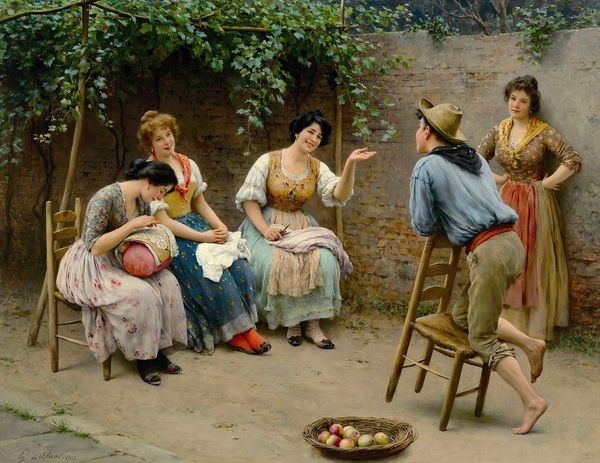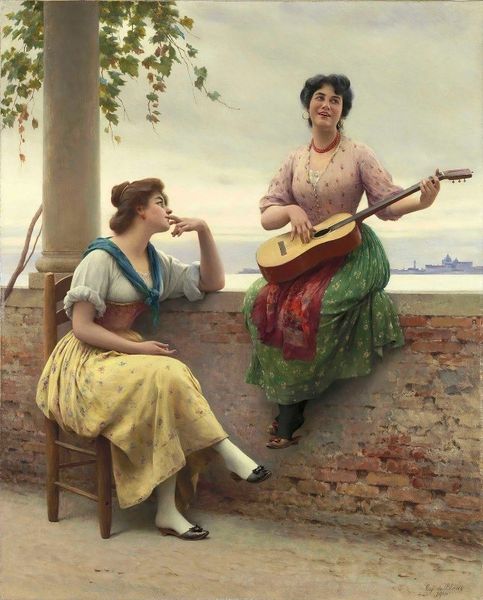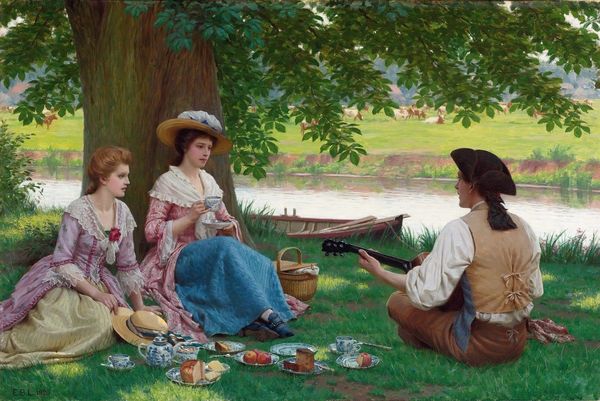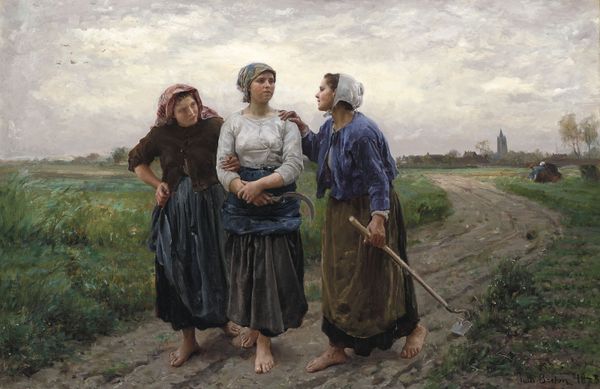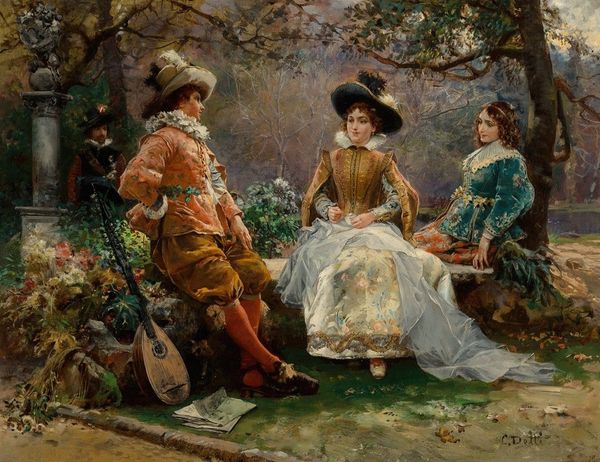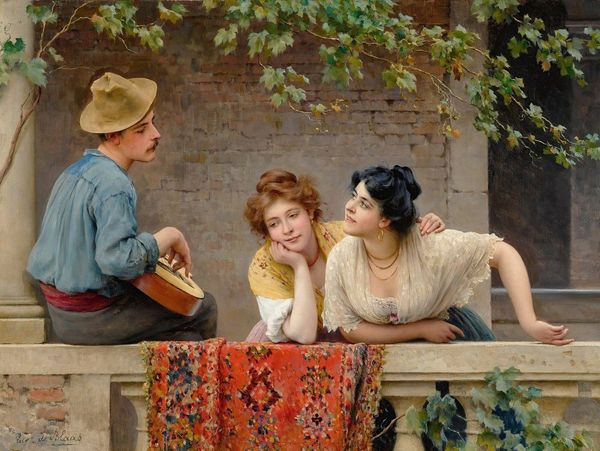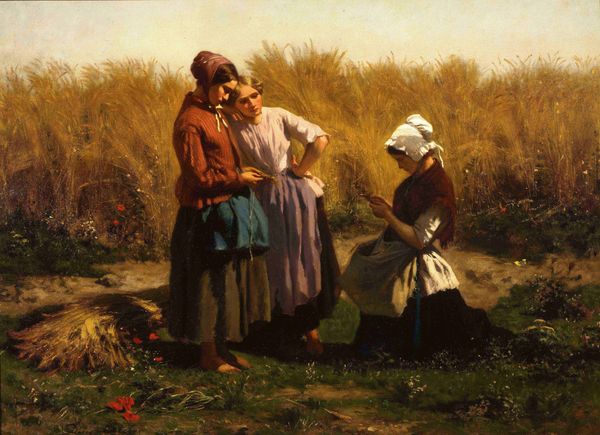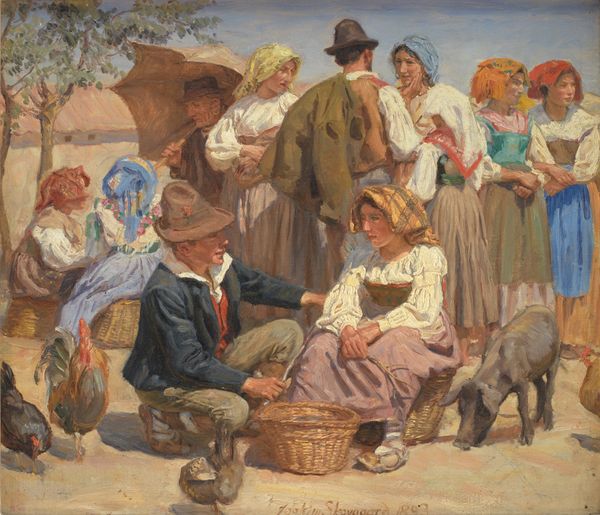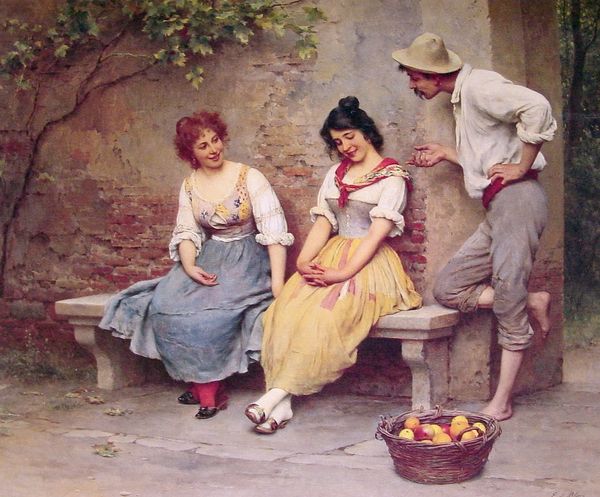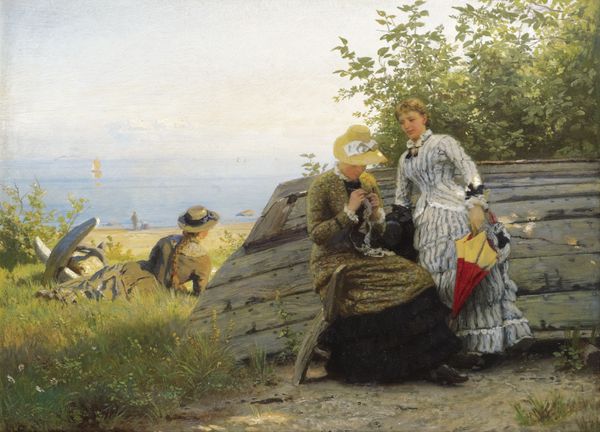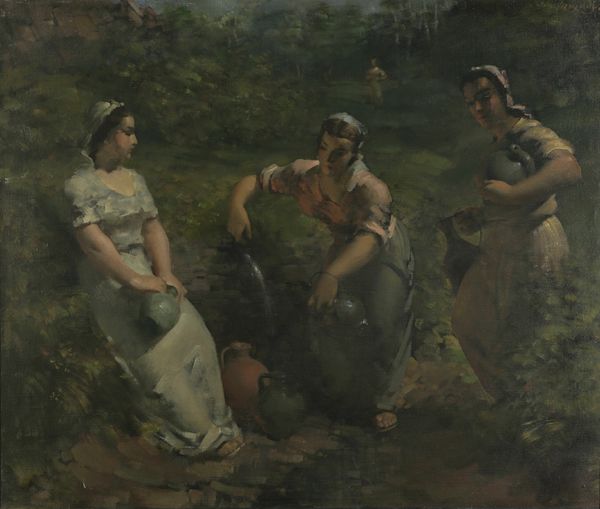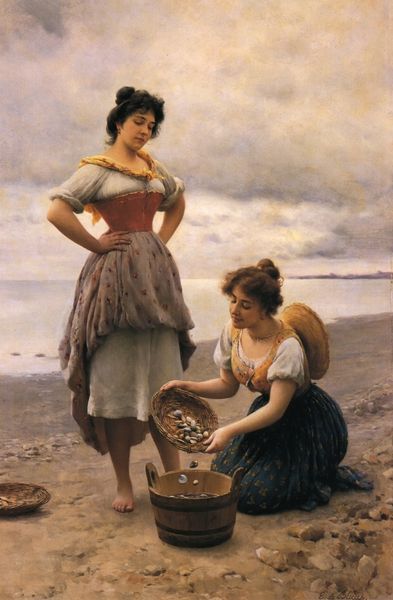
Dimensions: 111.8 x 95.3 cm
Copyright: Public domain
Curator: The painting before us is titled "The Serenade," created by Eugene de Blaas around 1910. It’s oil on canvas, currently held in a private collection. What are your initial thoughts? Editor: It has such a lovely, gentle quality. The scene seems plucked from a bygone era, evoking feelings of calm, of tradition, but there's also a certain artificiality in the setting... almost theatrical. Curator: The theatrical feel is understandable. De Blaas often painted genre scenes of Venetian life, popular with tourists. Notice the recurring imagery in his works – attractive, fashionably dressed women and handsome, romantic men, all idealized. It presents Venice as eternally picturesque. Editor: Absolutely. You see it in the light – almost stage lighting – highlighting the figures and their tasks: lace-making, net-mending, and, of course, the serenade. There’s something about the way the women are positioned, passively listening, that suggests a male-dominated gaze at play. The musician sits perched above, literally and symbolically. Curator: Interesting perspective. Consider also the historical context – tourism's impact on Venice around the turn of the century, influencing artists to create appealing, marketable narratives. This idealized serenade echoes traditional courtship rituals while repackaging it for the burgeoning tourist trade. The songs become part of the spectacle, selling the city's romantic image. Editor: That tension between authentic representation and performative tourism is crucial. It makes you wonder about the lives of these women outside this constructed scene. Their labor mending nets and lace has a socio-economic significance often overlooked in favor of romanticized idylls. I find myself curious if this canvas perpetuates existing power dynamics. Curator: I think it reflects those dynamics but perhaps also seeks to offer an idealized escape. The symbols themselves – the lace, representing delicacy and skill, the nets signifying labor and provision – exist within a broader framework of visual cues intended to elicit a sense of nostalgia, a yearning for a simpler time. Editor: And therein lies the power of the image, isn't it? The capacity to stir yearning, even when divorced from reality. Examining how these symbols function is really useful to contextualize and demystify the artistic allure of the painting. Curator: Precisely, it encourages us to look beyond the surface of "beauty" and consider the societal narratives that these paintings propagated. Editor: It is a gentle reminder of how art reflects, and shapes, our perceptions of the past. Thanks for sharing your insight.
Comments
No comments
Be the first to comment and join the conversation on the ultimate creative platform.
